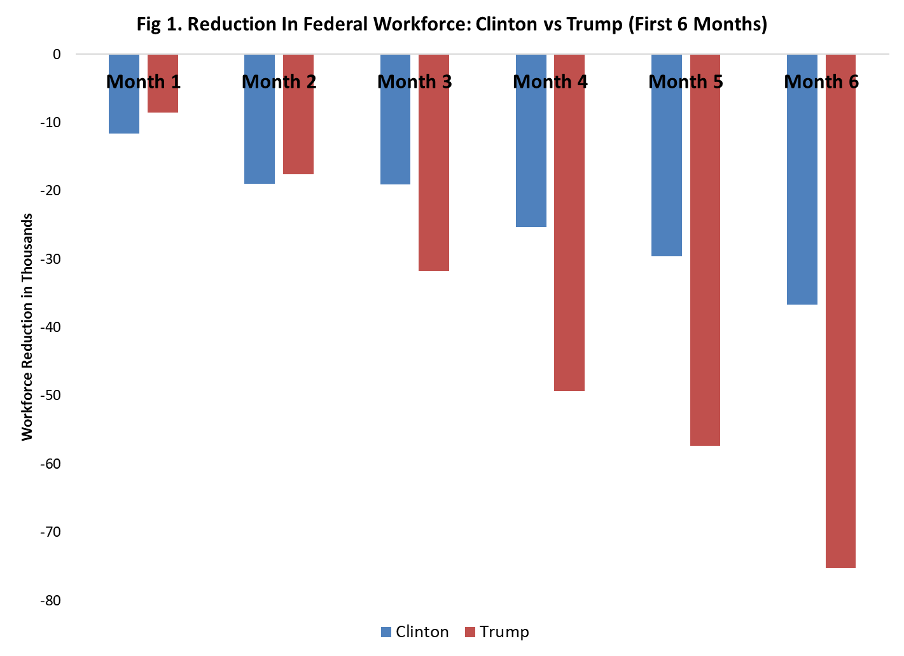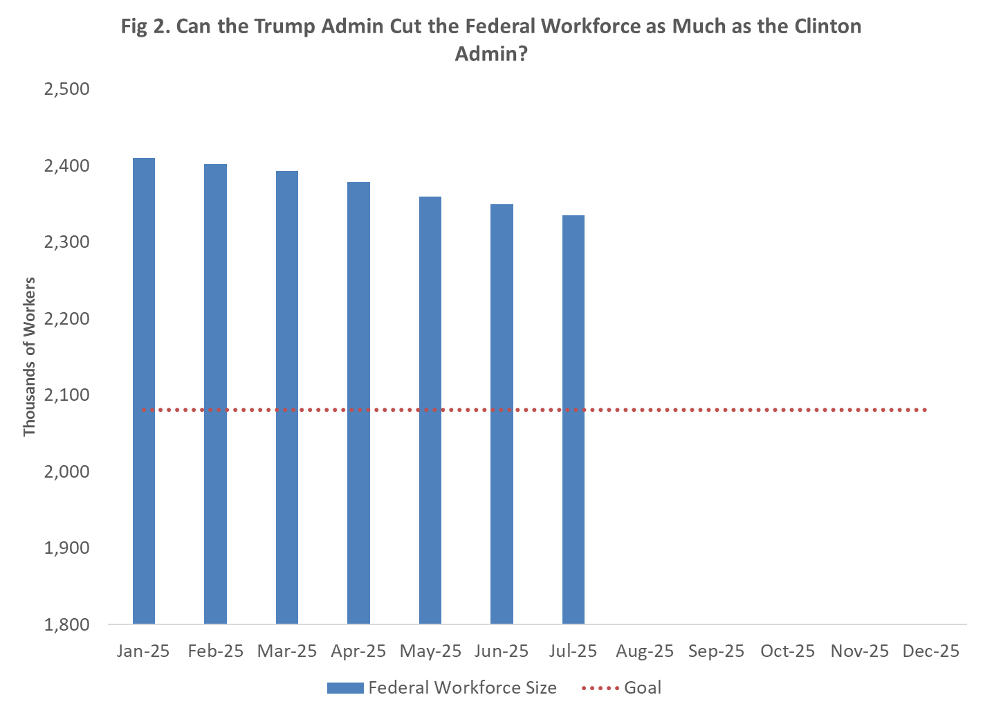Tracking Efforts to Shrink the Size of the Federal Workforce: July 2025 Update
Yesterday’s jobs report marks the sixth Bureau of Labor Statistics (BLS) report to capture at least some of the workforce restructuring and agency-level staffing adjustments initiated after the new administration issued Executive Order (EO) 14210 on “Reforming the Federal Workforce to Better Serve Americans.”
As of July 2025, there were 2.93 million federal government workers, excluding active military personnel. However, 596,100 of those workers were Postal Service employees. Excluding Postal Service workers, there were 2.34 million federal government workers. This is a decline of 14,100 from last month, and a total decline in the federal workforce of 75,200 this year.
Federal Hiring Freeze Extended Again
As I noted in last months update, most of the drop in the federal workforce numbers is the results of the Presidents hiring freeze memorandum, which was initially implemented in January. The hiring freeze executive order was extended in April through July 15, and was extended again in July through October 15, in the next fiscal year.
There are exemptions for positions related to immigration enforcement, national security, or public safety. Those include jobs like Veterans Affairs medical personnel, food safety inspectors, firefighters, air traffic controllers, and National Weather Service employees.
The Department of Veterans Affairs (VA) earlier in July scrapped plans to lay off almost 80,000 employees and instead noted that it planned to reduce the total number of staffers by nearly 30,000, “through the federal hiring freeze, deferred resignations, retirements and normal attrition,” the VA announced on July 7.
How Do Ongoing Efforts Compare to Clinton Administration’s Achievements in Shrinking the Federal Workforce?
Reducing the number of federal employees by the same amount that the Clinton administration did during his first term would require shrinking the federal workforce to fewer than 2.08 million workers by 2028. The two figures below show the month-by-month comparison between workforce reductions under the Clinton administration versus the current Trump administration, and efforts so far in relation to the ultimate goal of matching the scale of Clinton’s cuts.
This series covers workforce reductions, agency restructuring efforts, and any new policies or developments related to these initiatives. Stay tuned for regular updates on the Trump administration’s progress toward achieving its federal workforce reduction goals.
You can read my previous updates for February, March, April, May, and June.




